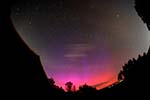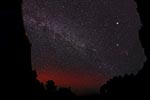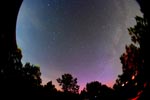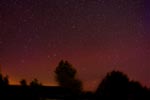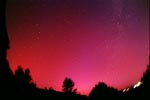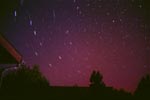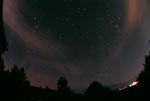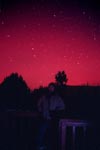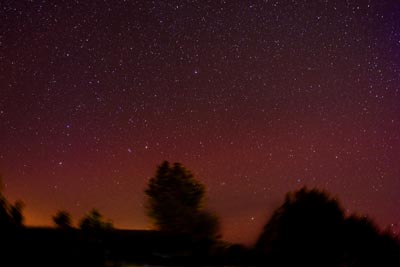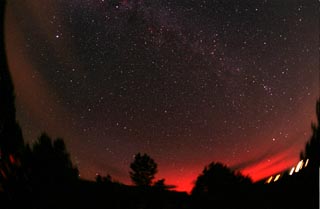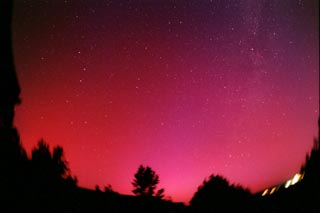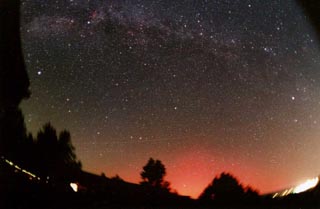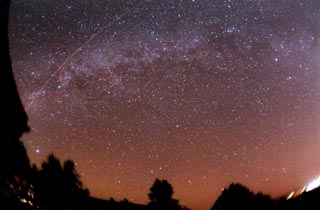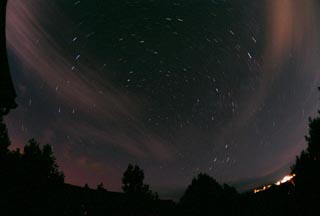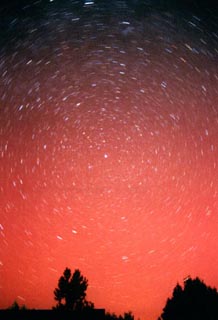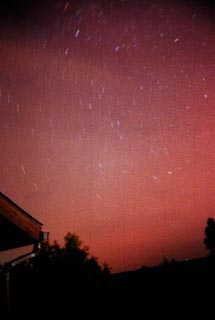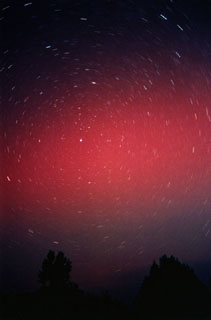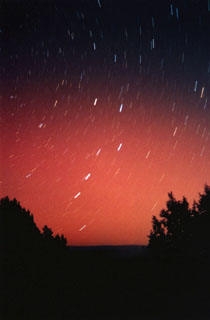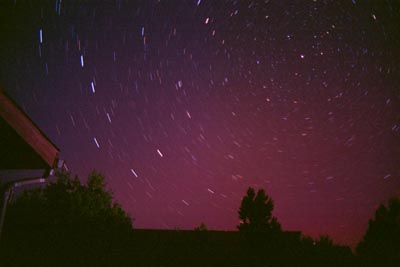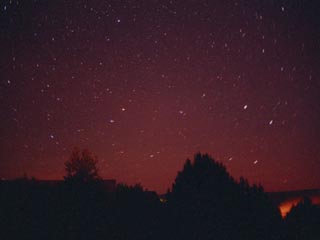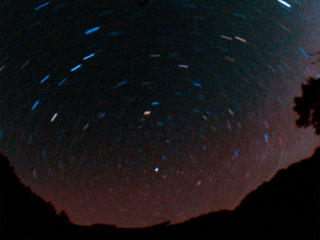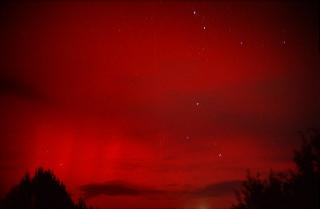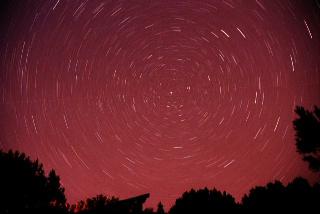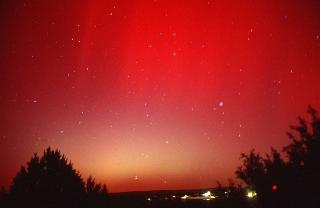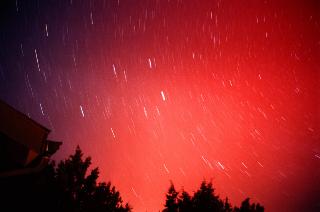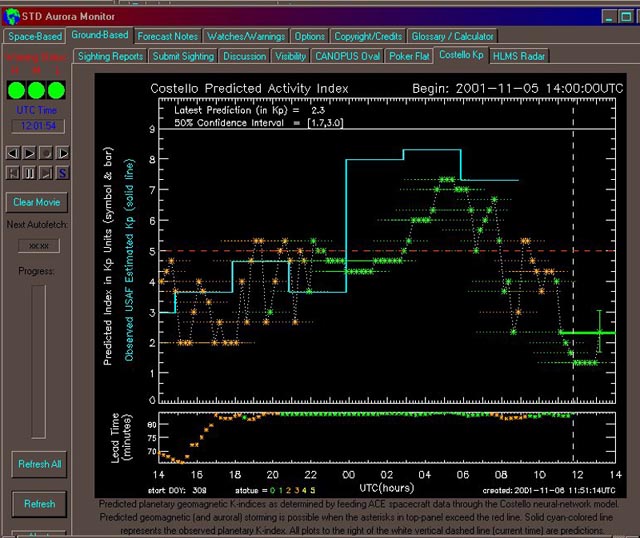When a solar flare erupts or a coronal hole opens up and is aimed at Earth, the possibility exists for the solar wind to reach storm levels, and interact with the upper atmosphere and magnetic fields to produce Aurora. Lucky are those who live in the Northern US, and in the Arctic circle during solar maximum, and can view the Aurora on a frequent basis. In Arizona, our magnetic latitude is very low, and at 34 degrees geographic latitude, the average rate for seeing the northern lights is 1/2 days per year. However, during solar max, if one carefully monitors the solar wind levels, and proton flux densities, and Kp index or photographs on THOSE days (if its night), your chances of getting a glimpse of this elusive phenomenon is increased a thousandfold. That is exactly how these nights of activity were seen or photographed, by keeping constant watch on the Kp value (see below for description) and being ready with film and camera at a moments notice!
The science of predicting when Aurora will occur is not precise. In the past, when astronomers would see a large solar flare erupt on the sun, a few days later, we MIGHT get some activity somewhere on the Earth, the closer to the poles, the better. That was 20 years ago. Today, with the advent of satellites orbiting the point between the Earth and Sun with proton flux instruments and magnetometers, and the Internet, we can constantly monitor the "space weather" and not just predict, but sensibly say for certain the arrival time days in advance and the magnitude of upcoming events. Below is the software I use, STD Aurora Monitor, available at Spacew.com, which gives you up to date data on solar activity and flux levels. Below is the display from the 5th. Points are taken at 15 minute intervals and plotted on a log scale graph. Normally, the Kp value as its called is around 1 - 2. When it hits 5 or over, marked by the red dashed line, it is considered storm level and somewhere usually in the far northern latitudes they will be seeing a display. For us in Arizona, because we are so far south, the Kp value must be much higher. The key points are 7, where you may not see an aurora but you can usually photograph its faint glow, and over 9, where a good visual display will certainly occur. This November 5th, the display was seen visually at a very low level, we started to see it at Kp = 6, and the best was Kp=8.5 when the colors were most intense. |
||||||||||||||||||||||||||||||
|
|
||||||||||||||||||||||||||||||
|
FastCounter by bCentral |
